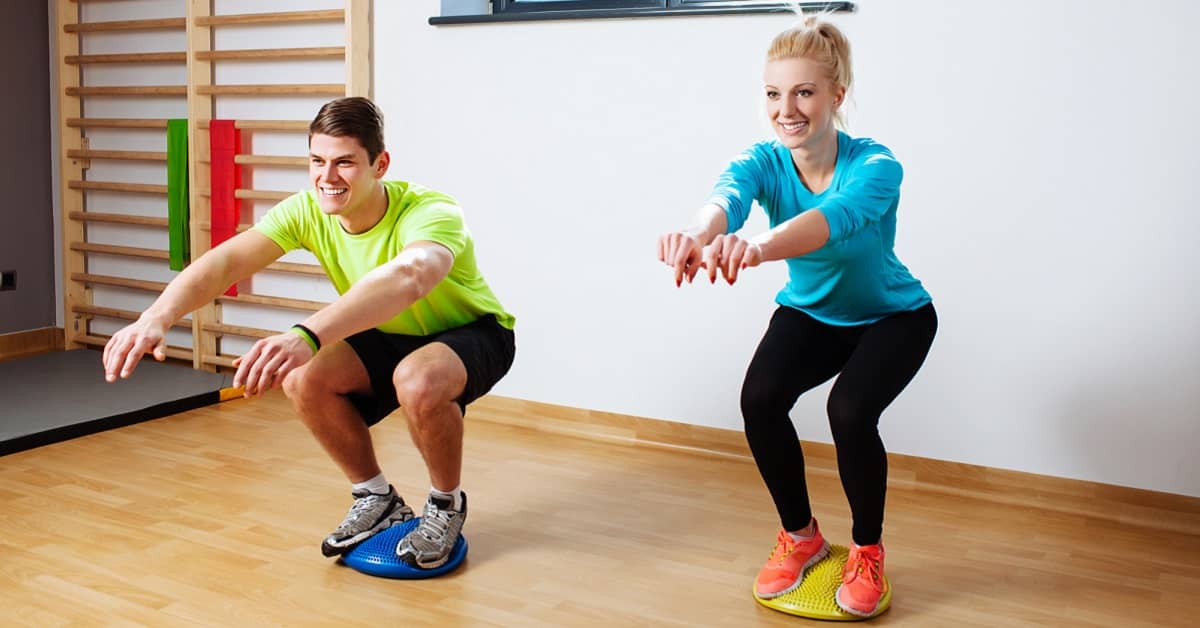
Have you ever reached for an object, only to completely misjudge its distance? Or found yourself stumbling unexpectedly, even though you thought you had steady footing? These small but telling moments reveal a hidden sense of working quietly behind the scenes—one that keeps you balanced, coordinated, and in control. But what if this crucial sense started to fade? More than just a matter of clumsiness, a decline in this ability could impact not only your physical stability but also your cognitive health. This elusive yet essential sense is called proprioception, and strengthening it might just be the key to maintaining both your body’s agility and your brain’s sharpness. Read on to discover why proprioception matters and how simple exercises can help you preserve it for years to come.
Key Takeaways
-
Proprioception is Your Body’s Internal GPS: This "sixth sense" helps you stay balanced, coordinated, and aware of your body’s movements without consciously thinking about them.
-
Proprioception Declines with Age: Just like vision and hearing, proprioception weakens over time, increasing the risk of falls and cognitive decline.
-
Exercise Enhances Proprioception and Brain Health: Activities like balance training, Tai Chi, and specific movement exercises can significantly improve proprioception, which in turn supports memory and brain function.
Stronger Body, Sharper Brain: The Science Behind Your Sixth Sense
Although you’re well aware of your five senses – hearing, vision, touch, taste, and smell – you have a sixth sense that you may never have heard of. (And no, movie fans, it’s not “seeing dead people!”)
This sixth sense is not a movie plot gimmick, much less supernatural, but a very real and essential part of your good health. You see, your sixth sense prevents you from tumbling out of bed at night. It keeps you from falling when you walk.
It even enables you to bring a fork to your lips—without missing a beat! -- and enjoy a delicious bite of food. It helps you keep track of the positions and movements of your arms and legs so you can move safely and easily.
If your sixth sense isn’t functioning well, you’re in trouble. . .
This sixth sense is called proprioception. It’s your sense of body awareness or the sense of where your body is located in its spatial surroundings.
Unfortunately, proprioception, like your other five senses, deteriorates with age. When this happens you’re more likely to fall and get seriously injured. But the latest research reveals falling is not the only peril of losing your youthful proprioception.
It goes to the heart of dementia, too.
In addition to regulating your body’s physical movements, research shows that proprioception also helps regulate memory and brain function. The research shows that if you can maintain better proprioception then you maintain a better memory as you age.
Keep your brain working better and reduce your risk of falls, bruises, and broken bones. That’s a win-win in my book. So how exactly do you improve proprioception? It’s easier than you might think.
Exercise Muscle-to-Brain Communication
By now, if you’ve been following the research on ways to improve your memory and brain function, you’ve read about how exercise can support and boost your intellectual abilities. In particular, some scientists believe that the more you improve your aerobic fitness, the more you help your neurons stay healthy.
One important way exercise helps memory, some researchers believe, is that it boosts your proprioceptive sense.
It has this effect because proprioception depends on threads of cells in muscle tissue. These threads are called spindles, and they contain nerves that track muscle activity and send information to the brain so the body knows where it is in space. For example, the transmitted information communicates whether your muscles are staying still, getting longer, or contracting.
The larger muscles in your legs contain sparse spindles that communicate more general data about movements and positioning. In contrast, the parts of your body that need to operate in precise, closely regulated movements and activities, like your tongue, vocal cords, hands, and fingers, contain a denser collection of spindles that send more data to the central nervous system and allow more finely tuned muscle control.
Along with the spindles, tendons contain what are called Golgi tendon organs that communicate muscle tension. As a muscle contracts and grows shorter, these organs transmit data to the brain about the force involved in the contractions, which also aids your proprioceptive sense.
Bettering the Brain
The proof for all of this is very interesting. Here’s one example: an animal study at Rutgers University shows that training for better physical control of the body – in this case, the animals trained on rotating rods that developed their coordination and balance – produces more benefits for brain neurons than merely doing aerobic exercise on a running wheel or treadmill.
It works on humans, too. Analyses performed on people show that honing your balancing skills can enlarge your hippocampus (a critical brain memory center that shrinks with age) as well as other important parts of the brain.
Impressively, a growing body of evidence also shows that you can boost your brain power quickly by working on nothing more than your proprioception sense.
For example, a study in Germany looked at this phenomenon in people between the ages of 19 and 65 who were trained with balance exercises – like standing on a wobbly board – twice a week. The exercise program improved their cognitive abilities significantly in three months.
In research at the University of North Florida, after only one session of balance exercises, people’s working memories improved measurably. In this study, test subjects did activities like walking along a beam, carrying objects that were awkwardly unbalanced, and even climbing trees.
Practical Exercises You Can Do at Home
I’m not suggesting you take up gymnastics or tree climbing, but there are plenty of other balance-building exercises you can do to improve your proprioception. One of the easiest is to join a Tai Chi class.
Tai Chi is a traditional Chinese exercise that entails slow movements that resemble slow dance moves. At the same time, a Tai Chi session emphasizes balance and body control. The results of a study at the University of South Florida that involved researchers from China show that doing Tai Chi three times a week can keep your brain bigger and spur better brain function.
Best of all, Tai Chi can be practiced by just about anyone. I’ve even heard of seated Tai Chi exercises for those who are too ailing to stand.
I think it’s safe to say that most of never think about proprioception. It just seems to be a natural physical ability that takes care of itself. But as these studies make clear, paying a little more attention to this “sixth sense” and making small efforts to improve it can provide you with big brain benefits for years to come.
Summary
While we often focus on our five primary senses, there’s a crucial sixth sense that plays a major role in our daily lives—proprioception. This internal sense of body awareness helps us move fluidly, maintain balance, and avoid accidents. However, proprioception declines with age, increasing the risk of falls and even cognitive impairment. Emerging research reveals that strengthening proprioception through targeted exercises—such as balance training, yoga, and Tai Chi—can enhance brain function and memory. By incorporating simple movement practices into your routine, you can safeguard both your physical stability and mental sharpness for years to come.
Frequently Asked Questions
What is proprioception, and why is it important?
Proprioception is your body's ability to sense its position and movement in space. It plays a vital role in balance, coordination, and preventing injuries.
How does proprioception affect brain health?
Research shows that proprioception helps regulate memory and cognitive function. Strengthening this sense can reduce the risk of dementia and improve mental clarity.
What are some easy ways to improve proprioception?
Activities like Tai Chi, balance exercises, and movements that challenge coordination (such as walking on uneven surfaces) can help enhance proprioception.
Can proprioception decline to be reversed?
Yes! Studies indicate that proprioceptive training can significantly improve balance and cognitive function, even in older adults.
Is proprioception training only for athletes?
Not at all—anyone can benefit! Simple exercises, even for beginners or seniors, can greatly improve body awareness and overall stability.
- Curlik, D. M., 2nd, Maeng, L. Y., Agarwal, P. R., & Shors, T. J. (2013). Physical skill training increases the number of surviving new cells in the adult hippocampus. PloS one, 8(2), e55850.
- Hüfner, K., Binetti, C., Hamilton, D. A., Stephan, T., Flanagin, V. L., Linn, J., Labudda, K., Markowitsch, H., Glasauer, S., Jahn, K., Strupp, M., & Brandt, T. (2011). Structural and functional plasticity of the hippocampal formation in professional dancers and slackliners. Hippocampus, 21(8), 855–865.
- Taubert, M., Draganski, B., Anwander, A., Müller, K., Horstmann, A., Villringer, A., & Ragert, P. (2010). Dynamic properties of human brain structure: learning-related changes in cortical areas and associated fiber connections. The Journal of neuroscience : the official journal of the Society for Neuroscience, 30(35), 11670–11677.
- Rogge, A. K., Röder, B., Zech, A., Nagel, V., Hollander, K., Braumann, K. M., & Hötting, K. (2017). Balance training improves memory and spatial cognition in healthy adults. Scientific reports, 7(1), 5661.
- Alloway, R. G., & Alloway, T. P. (2015). THE WORKING MEMORY BENEFITS OF PROPRIOCEPTIVELY DEMANDING TRAINING: A PILOT STUDY (.). Perceptual and motor skills, 120(3), 766–775.
- Mortimer, J. A., Ding, D., Borenstein, A. R., DeCarli, C., Guo, Q., Wu, Y., Zhao, Q., & Chu, S. (2012). Changes in brain volume and cognition in a randomized trial of exercise and social interaction in a community-based sample of non-demented Chinese elders. Journal of Alzheimer's disease : JAD, 30(4), 757–766.
